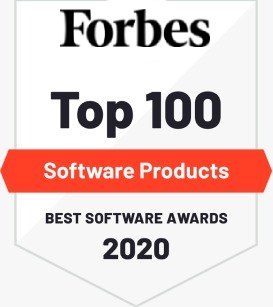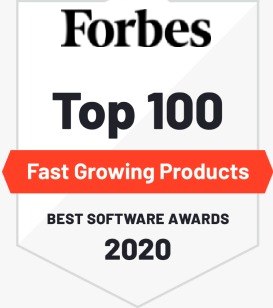Section 1 : DevOps Introduction
|
|
Lecture 1 | Getting Started - Master DevOps - Docker, Kubernetes, Terraform & Azure DevOps | 00:06:16 Duration |
|
|
Lecture 2 | Github Repository for the course | |
|
|
Lecture 3 | DevOps and Evolution of Software Development | 00:03:53 Duration |
|
|
Lecture 4 | Before DevOps - Evolution to Agile | 00:05:05 Duration |
|
|
Lecture 5 | DevOps - An Overview | 00:04:40 Duration |
Section 2 : Start DevOps with Docker
Section 3 : DevOps with Docker and Kubernetes on Google Kubernetes Engine
Section 4 : Getting Started with Infrastructure as Code
|
|
Lecture 1 | Getting Started with Infrastructure as Code | 00:04:07 Duration |
Section 5 : DevOps Infrastructure Provisioning with Terraform on AWS
Section 6 : Getting Started with Continuous Integration, Deployment and Delivery
|
|
Lecture 1 | Getting Started with Continuous Integration, Deployment and Delivery | 00:04:46 Duration |
Section 7 : Learn Azure DevOps - Continuous Integration, Deployment & Delivery - Docker
Section 8 : DevOps on Azure AKS Kubernetes Clusters - Docker, Azure DevOps & Terraform
Section 9 : DevOps on AWS EKS Kubernetes Clusters - Docker, Azure DevOps & Terraform
Section 10 : Learn Azure DevOps with Boards and Backlogs
|
|
Lecture 1 | Step 01 - Getting Started with Azure DevOps with Demo Generator | 00:02:42 Duration |
|
|
Lecture 2 | Step 02 - Overview of Azure DevOps - Boards, Wiki, Repos and Pipelines | 00:08:58 Duration |
|
|
Lecture 3 | Step 03 - Exploring Azure DevOps Boards - Epics, Features and User Stories | 00:06:18 Duration |
|
|
Lecture 4 | Step 04 - Azure DevOps - Boards View vs Backlogs View | 00:04:20 Duration |
|
|
Lecture 5 | Step 05 - Understanding Sprints in Azure DevOps | 00:06:37 Duration |
|
|
Lecture 6 | Step 06 - Creating Azure DevOps Queries | 00:02:20 Duration |
|
|
Lecture 7 | Step 07 - Playing with Azure DevOps Repos | 00:02:41 Duration |
|
|
Lecture 8 | Step 08 - Quick Review of Azure DevOps Pipelines | |
|
|
Lecture 9 | Step 09 - Quick Review of Azure DevOps | 00:00:56 Duration |
Section 11 : Learn Continuous Integration with Jenkins
Section 12 : DevOps Configuration Management with Ansible
Section 13 : Appendix - Installing Visual Studio Code
|
|
Lecture 1 | Step 01 - Installing VS Code | 00:03:34 Duration |
|
|
Lecture 2 | Step 02 - Download and Setup Projects in Visual Studio Code | 00:04:16 Duration |
Section 14 : Appendix - Introduction to Microservices
|
|
Lecture 1 | Step 01 - Introduction to Microservices | 00:03:52 Duration |
|
|
Lecture 2 | Step 02 - Advantages of Microservices | 00:02:40 Duration |
Section 15 : Appendix - Exploring Microservice Projects
|
|
Lecture 1 | Step 01 - Code Review - Microservices | 00:06:43 Duration |
Section 16 : Appendix - Getting Started with AWS
|
|
Lecture 1 | Step 01 - Creating an AWS Root Account | 00:04:42 Duration |
|
|
Lecture 2 | Step 02 - Creating an IAM User for your AWS Account | 00:07:47 Duration |
|
|
Lecture 3 | Step 03 - Its Your Responsibility to Monitor Billing on Cloud-5 Recommendations | 00:06:11 Duration |
|
|
Lecture 4 | Step 04 - Monitor AWS Billing - Setting Billing Alerts | 00:05:04 Duration |
Section 17 : Appendix - Getting Started with Azure
|
|
Lecture 1 | Step 01 - Creating an Azure Account | 00:04:00 Duration |
|
|
Lecture 2 | Step 02 - Exploring Cloud Best Practices - Minimize Costs | 00:05:42 Duration |
Section 18 : Appendix - DevOps Best Practices and Perspectives
|
|
Lecture 1 | Step 01 - DevOps - Break down the wall | 00:03:07 Duration |
|
|
Lecture 2 | Step 02 - DevOps Perspectives - CAMS | 00:02:03 Duration |
|
|
Lecture 3 | Step 03 - DevOps Best Practices | 00:03:39 Duration |
|
|
Lecture 4 | Step 04 - DevOps Perspectives - Continuous DevOps | 00:03:03 Duration |
|
|
Lecture 5 | Step 05 - DevOps Maturity Assessment - Questions to ask | 00:06:48 Duration |


